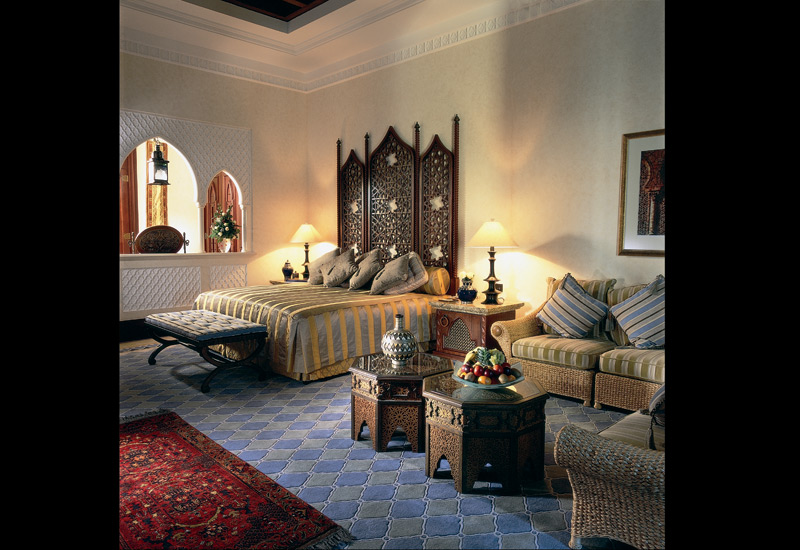Such high-profile personalities will encourage interest in the interior and furnishing industries, and further promote good design in the hospitality sector, he maintained. “I think this is positive. When those fashion labels are showing such a high interest in furniture and interiors, it means we have an attractive business. All the high-end people will benefit.”
The company was recently selected to furnish Moschino’s first venture into hospitality. Maison Moschino is scheduled to open this year on Viale Monte Grappa in Milan. Located in a restored 1840s neoclassical railway station, the hotel will feature 58 rooms and seven suites, set over four floors.
“We’ve just got an order for the Moschino hotel in Milan. The brand is called Maison Moschino and the idea is to clone this in several cities around the world. They are introducing the first of these iconic hotels in Milan and Selva has been appointed to do the rooms. We are also in contact with several other fashion people so there might be other things coming up,” he revealed.
Suppliers across the board are reporting demand for quirky products that will set their hotel clients apart in an increasingly competitive competitive set. “What we have been finding is that hotels have been taking a leaf out of the ‘boutique hotel’ book and looking to invest in that ‘wow’ factor,” said Agnelo Fernandes, export director of Cole & Son, the British wallpaper specialist.
“We’ve never been used by the Hilton or Sheraton brands, for example, but now the orders are starting to come through. People want something slightly more quirky,” he added.
Branded hotels are starting to recognise that even though they might be part of a wider family and must offer some level of consistency, there is no excuse for shying away from original design. “It is interesting to see that the most amazing hotels in the world have historically been non-branded – Hotel de Crillon in Paris, The Ritz in London, the Oriental. They are about being unique and belonging to a place,” Amalou pointed out.
“I believe that, recently, brands such as GHM have succeeded in doing this, with The Datai and the Setai, for example. So, my view is simple, successful hotels are not about branding. They are about a successful chemistry of location, design, service and, first and foremost for boutique hotels, about being able to create an experience strong enough that you will go back home with memories.”

Advertisement
Goodbye to classical
While the need to be different means that there are few distinct trends currently shaping hoteldesign, there is one constant, said Leung. The age of classical design has come to a close.
Even operators that have traditionally promoted a more classical design ethos are adopting a more contemporary approach to their interiors, he maintained. “Classical interiors will be out of the picture in the very near future. People are getting tired of classical design.
“Even brands like Four Seasons and Saint Regis, which have traditionally been very classical, are becoming more contemporary. There are obviously exceptions but with a new build it is unlikely that you would introduce a heavy, classical design,” said Leung.
However, that’s not to say that hotels should introduce cookie cutter, contemporary design schemes that show no regard for cultural context, he said.
“Contemporary design will become mainstream but I’m not suggesting that hotels across the world should all be the same, even within that contemporary context. People want unique design that includes cultural, contextual design elements. They don’t want to go into a Park Hyatt that looks the same whether it is in Shang-Hai, Dubai or London.”
Leung called upon the example of Armani Hotels & Resorts, which is dedicated to creating contemporary hotels with strong cultural ties. “I’ve met with the Armani team and they quoted Mr. Armani as saying that he doesn’t want to use the same architects and interior designers for each of his hotels. He wants to find the most suitable local designers to work on each project.”
Amalou also reiterated the importance of making sure that hotels contain cultural context. “For example, at the Nam Hai in Vietnam, which we designed, we created a ‘platform room’. The rooms are laid out with no loose furniture, but with a single long platform in the middle. It houses the bed, the desk, the bath and a day bed,” Amalou said. “You can close it all round with soft curtains and it becomes a ‘protected’ private environment within the room. I believe this experience is totally unique.”
And never has the need to be unique, intelligent and innovative been more acute – the current economic climate offers little room for any other kind of project. “I think we are going to see projects with strong fundamentals happen,” Amalou said.
“Others that rely on feeble sites and far-fetched branding will most certainly stop, if not disappear.”









 Search our database of more than 2,700 industry companies
Search our database of more than 2,700 industry companies









